Did you know that some of the biggest dog breeds are also among the most gentle and loyal companions for families? While their size might seem intimidating, many large dogs are affectionate protectors who thrive in homes with room to roam and people to love.
If you’ve got a spacious backyard or an active household, choosing the right large breed can bring energy, warmth, and a sense of security to your family life. Understanding their temperaments, needs, and how they interact with children or other pets is key to finding your perfect four-legged friend.
Let’s explore some of the best large dog breeds that fit beautifully into family life—especially when you’ve got the space to make them feel right at home.
Best Large Dog Breeds for Families with Space
1. Bernese Mountain Dog

The Bernese Mountain Dog is a large, tricoloured breed from Switzerland, originally bred to work on farms. Known for its calm and affectionate personality, this dog quickly becomes a beloved family companion. It combines impressive strength with a sweet and loyal temperament.
According to the AKC, their thick double coat provides insulation against cold weather but requires regular brushing to stay clean and free of mats. Families should expect heavy seasonal shedding and routine grooming sessions.
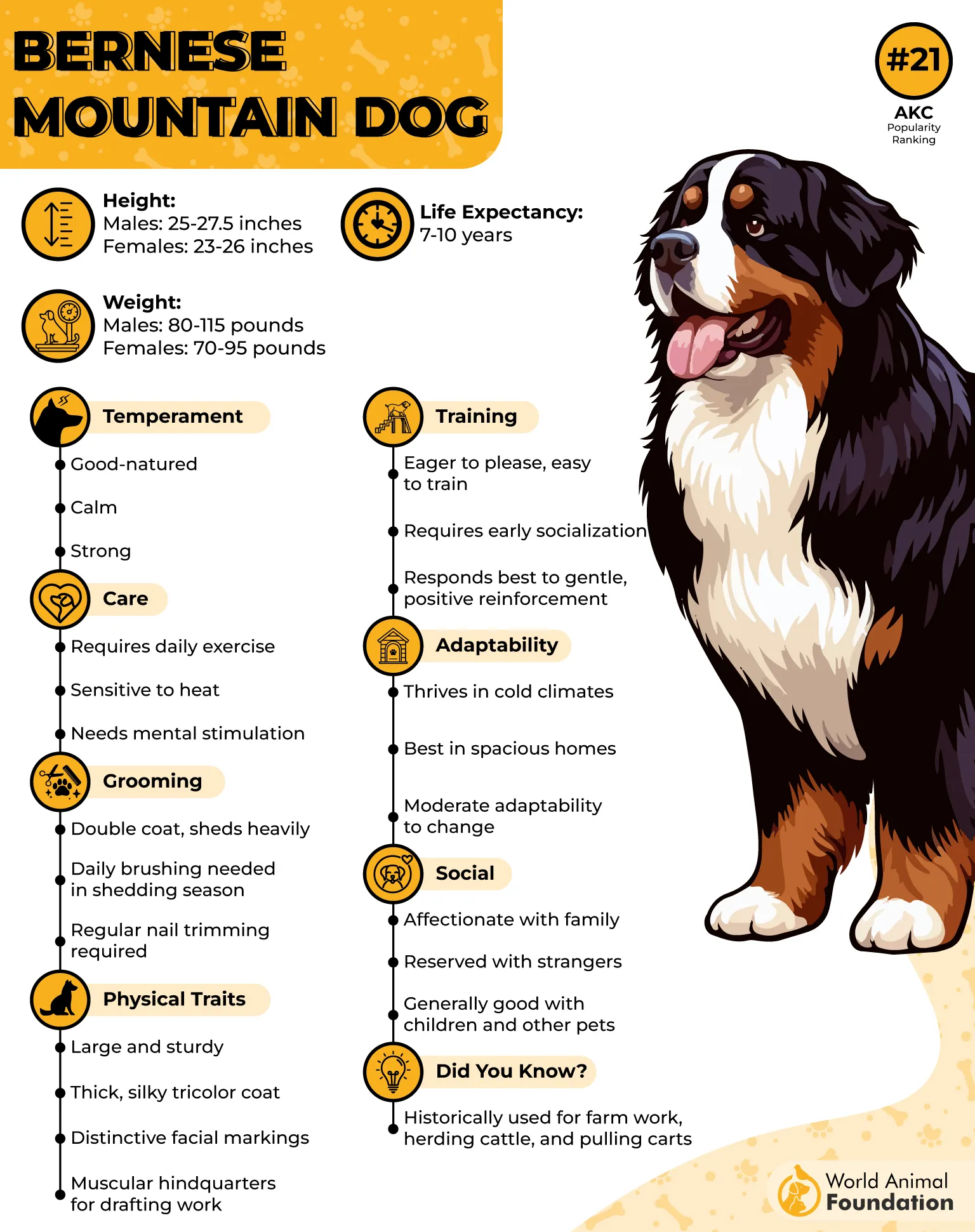
Bernese Mountain Dogs love spending time outdoors and thrive in cooler climates with open spaces. They enjoy long walks, moderate play sessions, and time around people. Daily activity keeps them both fit and happy.
Because of their gentle nature, they do especially well with children and other pets when socialized early. They’re patient and intuitive, often forming deep emotional connections with their family members.
Owners should be mindful of large-breed health risks such as hip dysplasia and bloat. Proper nutrition, joint care, and veterinary checkups help maintain their overall well-being.
Fun Fact
This breed is one of four Swiss mountain dog types and the only one with a long, silky coat, making it instantly recognizable among its working-dog relatives.
2. Great Dane
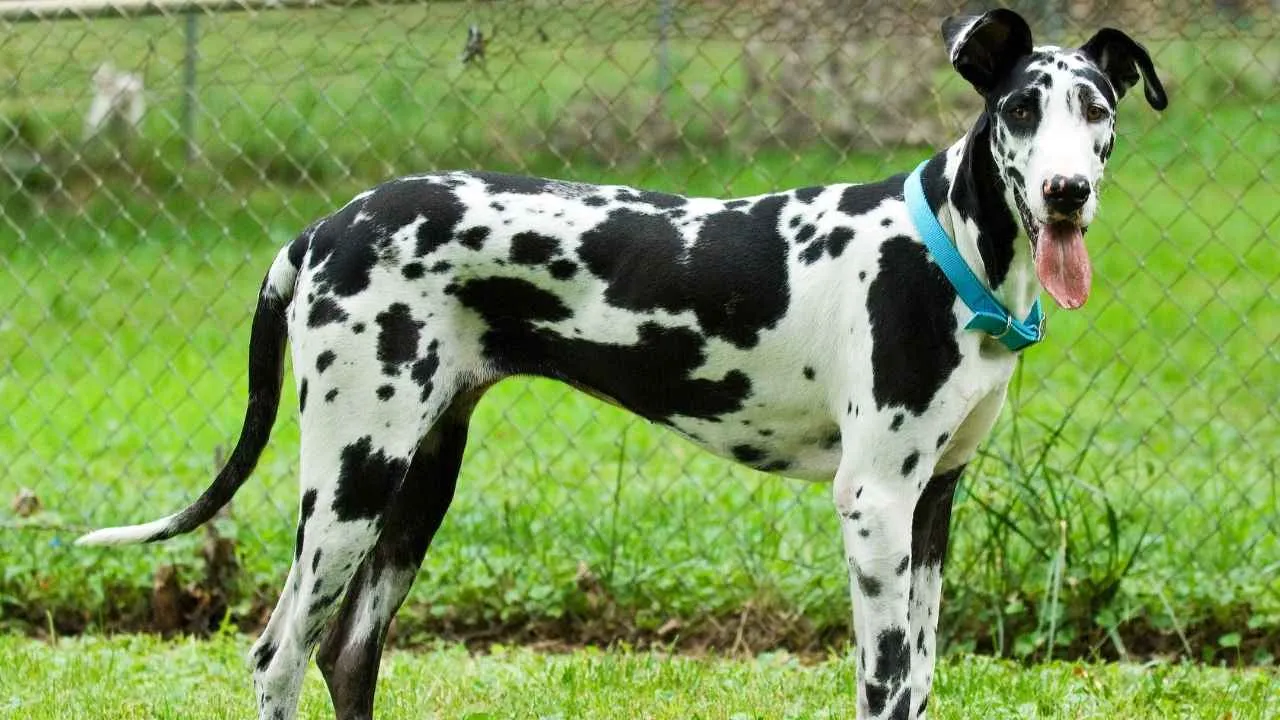
The Great Dane is often called the “gentle giant” for its massive size paired with a soft-hearted nature. Despite its imposing build, this breed is friendly, loyal, and deeply affectionate toward family members. It’s both regal and relaxed in temperament.
Historically bred in Germany for hunting wild boar, the Great Dane carries a powerful yet elegant stance. Its history as a guardian dog explains its protective but non-aggressive attitude in family settings.
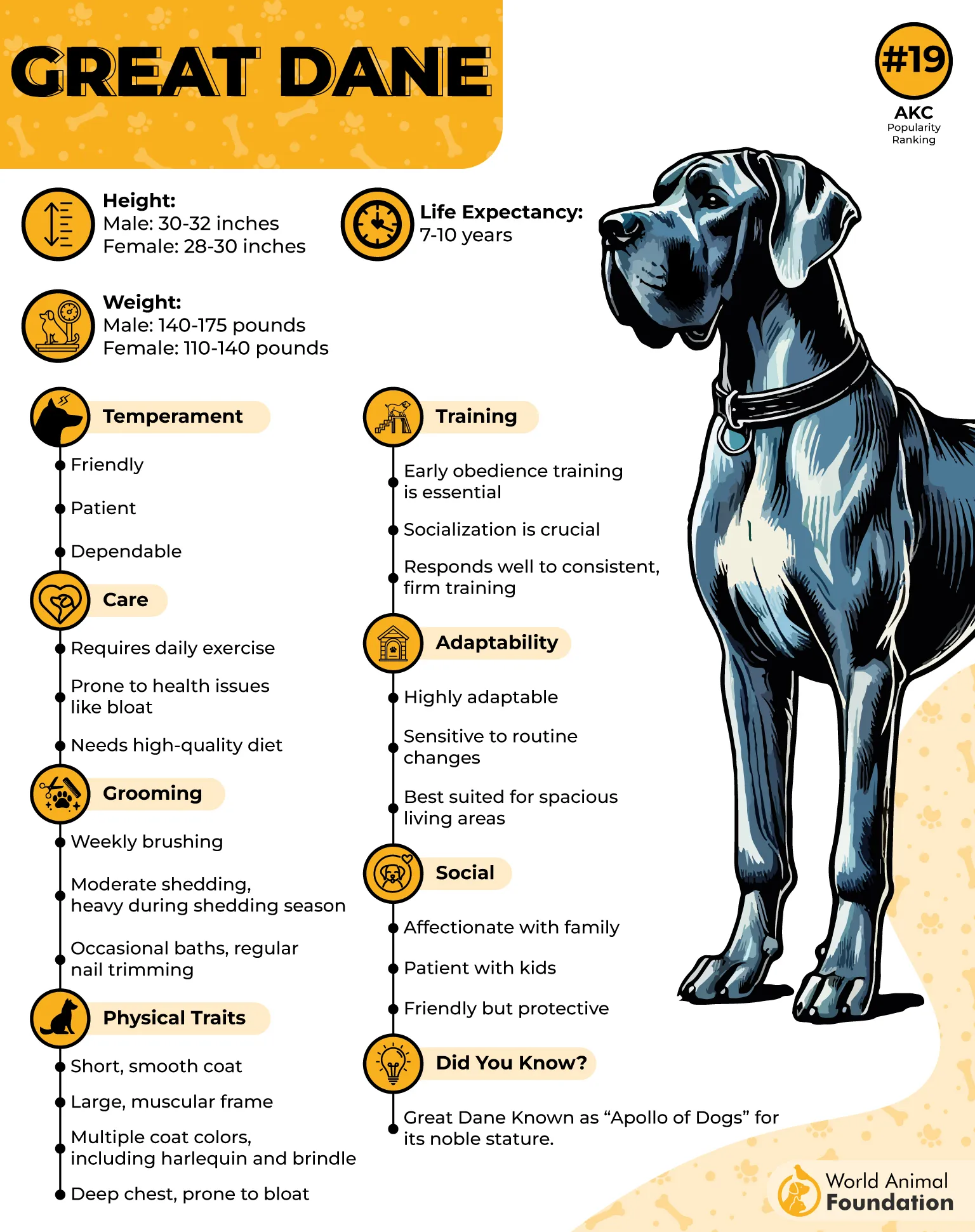
As per PetMD, Great Danes are calm and sociable. They enjoy spending time indoors near their people and appreciate moderate outdoor activity. A spacious home helps them move comfortably and avoid joint stress.
Because of their deep chest, they’re at risk of bloat, so feeding smaller, more frequent meals and avoiding heavy activity after eating is important. Regular vet checks and steady exercise are essential for long-term health.
Training and socialization should start early due to their rapid growth and large adult size. Their intelligence and eagerness to please make them quick learners when handled gently and consistently.
Fun Fact
The world’s tallest recorded dog, named Zeus, was a Great Dane who stood an astonishing 44 inches at the shoulder.
3. Newfoundland

The Newfoundland is a massive working breed that originated on the coast of Canada. Known for its strength, patience, and natural swimming ability, it was bred to help fishermen haul nets and rescue people from icy waters.
Its thick, water-resistant coat and webbed feet make it perfectly suited to life around water. Although powerful, this breed is famously gentle and dependable, earning a reputation as a devoted family protector.
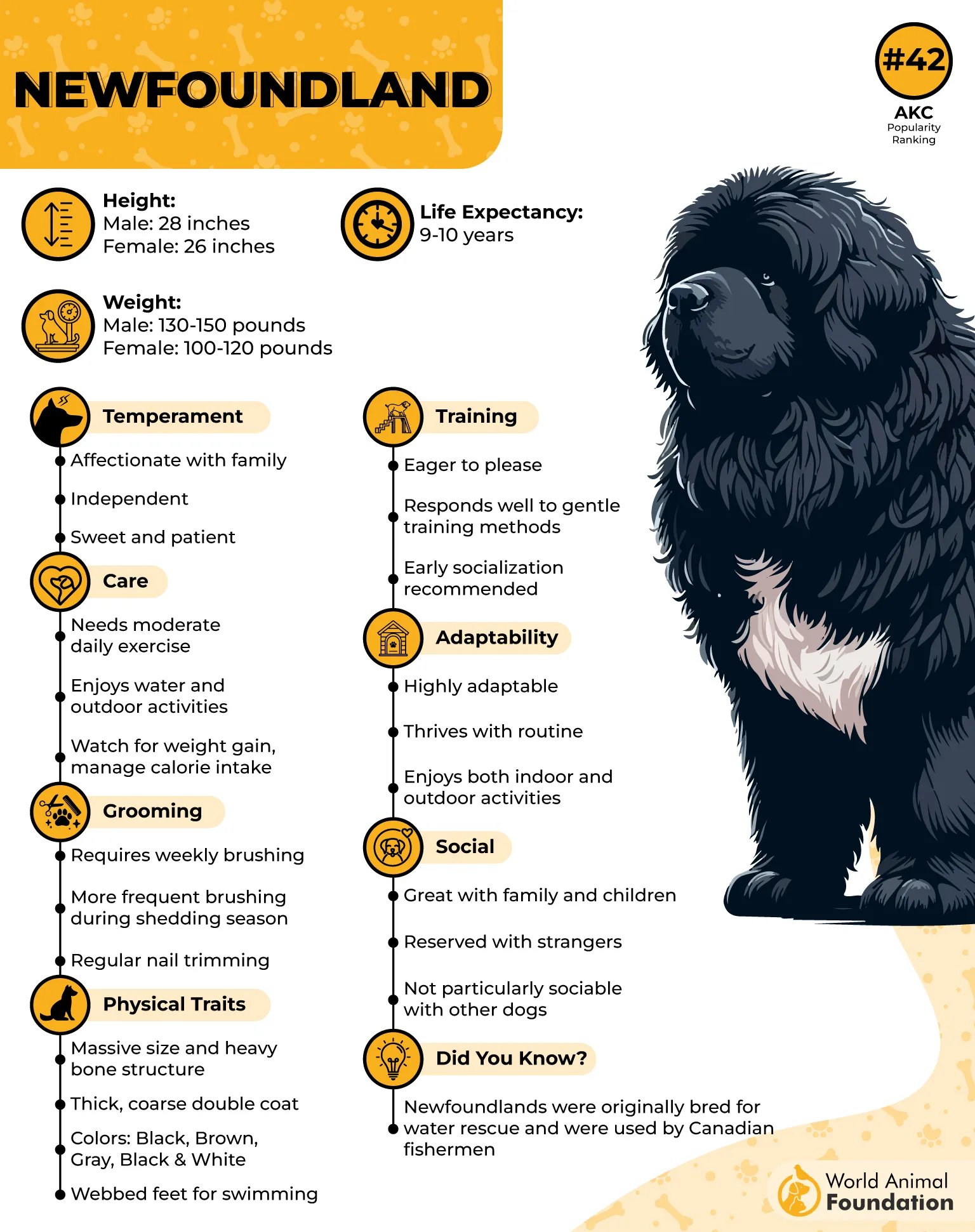
Britannica states that the Newfoundlands are affectionate with children and are often called “nanny dogs” for their calm supervision and tolerance. They thrive in homes that provide both affection and structure.
Because of their size, they need space to move freely and regular low-impact exercise such as swimming or long walks. Weekly grooming helps maintain their double coat and prevent matting.
Health concerns like hip dysplasia and heart issues are common in large breeds, so proper diet and preventive care are important. They do best in cooler climates and family homes with room to stretch.
Fun Fact
A Newfoundland named Seaman famously joined Lewis and Clark on their expedition across North America, saving crew members and guarding supplies along the way.
4. Irish Setter
The Irish Setter is an elegant, athletic breed known for its rich red coat and lively personality. Originally bred as a bird-hunting companion, it combines beauty, energy, and a love for human connection.
Irish Setters are naturally outgoing and thrive in family environments where they can stay active and involved. They adore playtime, exercise, and social interaction, often forming close bonds with everyone in the household.
Because of their high energy level, they need plenty of space to run and explore. Regular walks, outdoor games, and opportunities to stretch their legs help them stay content and healthy.
Their long, silky coat requires frequent brushing to keep it free of tangles and maintain its signature shine. Grooming sessions also strengthen the bond between dog and owner.
As per Purina, early training and consistent routines are essential since the breed’s curious, independent streak can make them easily distracted. With positive guidance, they’re loyal, loving, and a joy to live with.
Fun Fact
The first solid-red Irish Setters appeared in the 19th century; before that, most were red-and-white, making the deep chestnut coat a relatively recent trademark.
5. Anatolian Shepherd
The Anatolian Shepherd is a powerful and independent livestock guardian that originated in Turkey. Bred for centuries to protect herds from predators, this breed is known for its intelligence, courage, and calm confidence. It’s a working dog with a strong sense of duty and loyalty.
In a family environment, the Anatolian is devoted but not overly clingy. They are protective by nature and make excellent watchdogs for spacious properties or rural homes. Early training and socialization are key to managing their natural guarding instincts.
Their double coat helps them adapt to extreme temperatures, but it sheds heavily seasonally. Weekly brushing keeps their coat healthy and reduces loose hair around the home. Regular exercise and mental engagement help prevent boredom in this alert, independent breed.
Anatolian Shepherds are best suited to experienced dog owners who understand strong, self-reliant breeds. They respond well to firm yet respectful leadership and consistent positive training methods.

Though large and imposing, they are surprisingly gentle with family members once they trust their environment. Their calm demeanor and strong territorial instincts make them reliable protectors of both people and property.
Fun Fact
In their native Turkey, Anatolian Shepherds still work alongside shepherds today, often wearing spiked collars designed to protect their necks from predators like wolves.
6. Doberman Pinscher
The Doberman Pinscher is a sleek, athletic breed known for its intelligence, loyalty, and alertness. Originally bred in Germany as a guard and working dog, it has become a symbol of elegance and dependable companionship. With proper guidance, it’s affectionate and devoted to its family.
Dobermans are quick learners and among the most trainable of all large breeds. They thrive on structure and consistent routines, excelling in obedience, agility, and even therapy work. Their confidence and energy make them ideal for active households that can provide daily engagement.
Despite their reputation for toughness, Dobermans are sensitive and deeply bonded to their people. They are happiest when included in family activities rather than being left alone for long periods. Their loyalty and awareness make them exceptional protectors without unnecessary aggression.
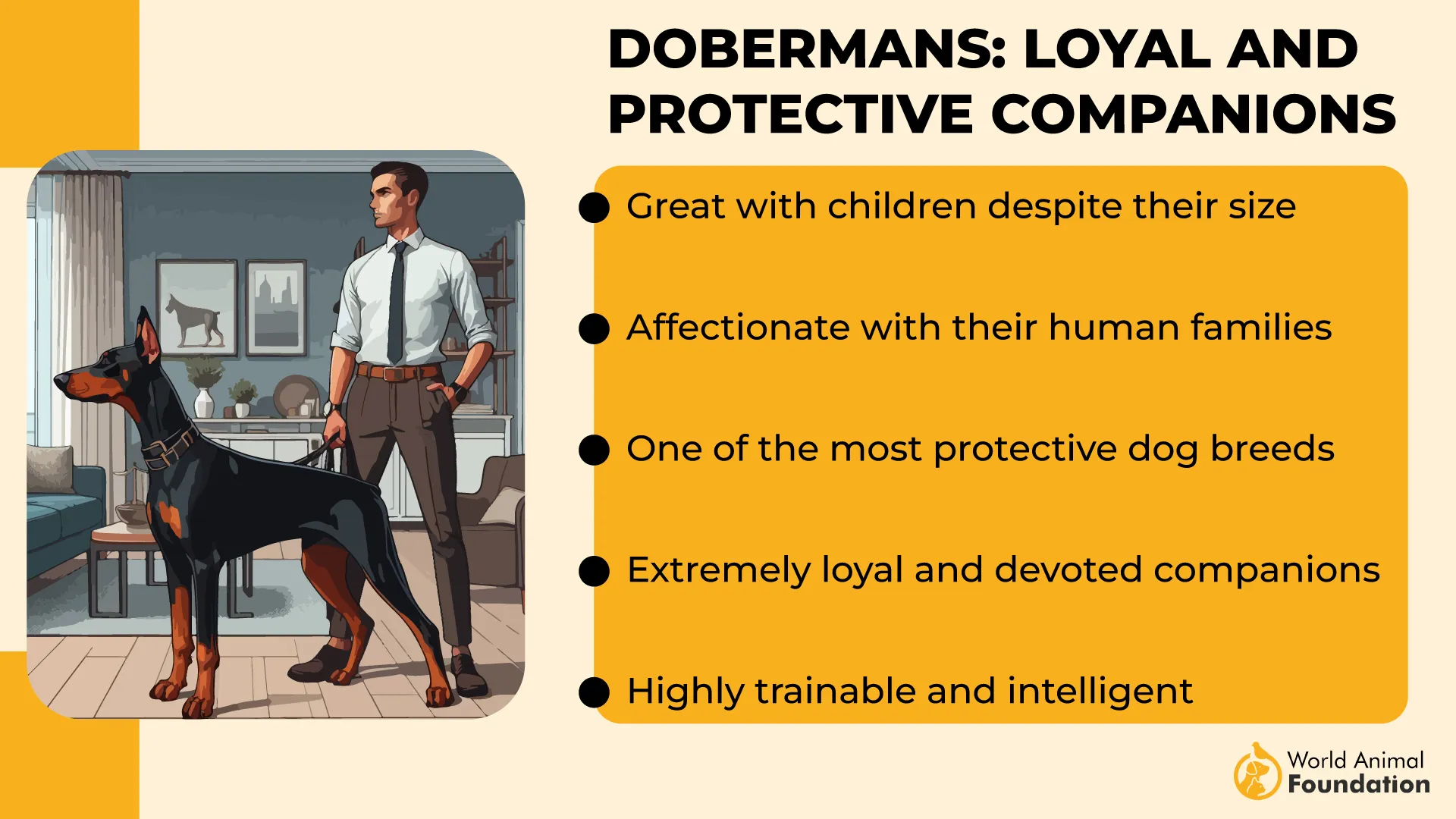
Physically, they are sleek, muscular, and built for endurance. Their short coats require minimal grooming, though regular exercise is essential to keep both mind and body balanced.
Common health concerns include hip dysplasia and heart conditions such as dilated cardiomyopathy. Responsible breeding and annual checkups are vital for maintaining this breed’s long-term well-being.
Fun Fact
The breed was created in the 19th century by a German tax collector named Louis Dobermann, who wanted a loyal dog to protect him on his rounds.
7. Alaskan Malamute
The Alaskan Malamute is one of the oldest Arctic sled dog breeds, developed by the native Mahlemut people for hauling heavy loads in harsh climates. With immense strength and endurance, this breed embodies power, loyalty, and resilience.
Malamutes are known for their playful and affectionate personalities. They form strong bonds with their families and do best in active homes that can provide daily exercise and social interaction. A spacious environment suits their energetic nature perfectly.
Their thick double coat protects them from freezing temperatures but also sheds heavily throughout the year. Frequent brushing is essential, especially during seasonal coat changes, to manage shedding and keep the coat healthy.
This breed has a strong pack mentality and does best with confident owners who provide clear structure and companionship. Without enough physical or mental stimulation, they can become vocal or mischievous.
They are generally good with children and thrive in households that appreciate outdoor adventures. However, because of their strength and prey drive, early obedience training is essential.
Fun Fact
Alaskan Malamutes were part of early Arctic expeditions and even helped carry supplies during World War II, proving their unmatched stamina and reliability.
FAQs
Can large dog breeds be gentle with children?
Yes, many large dogs are naturally gentle and patient with kids when properly socialized from a young age. Their affectionate nature and calm temperament often make them excellent family dogs.
How can families keep large dogs entertained at home?
Active families can engage big dogs with puzzle toys, regular playtime, and outdoor activities. Mental stimulation and consistent training help prevent boredom and keep them well–behaved.
Can big dogs adjust to indoor family life?
With enough exercise and regular grooming, many large dogs adapt well to indoor living. They enjoy being close to their families and can thrive in a loving home with enough living space.
Conclusion
Large dog breeds make excellent companions for active families who appreciate loyal, loving dogs with gentle personalities. When properly socialized and given consistent training, these family-friendly dogs show their best traits—patience, intelligence, and devotion.
They are ideal family pets for households with small children, older children, or large families who enjoy outdoor activities. Regular grooming, proper training, and care tailored to each pup’s natural instinct ensure they become well-behaved and affectionate members of the household.
Other dog breeds, such as the Golden Retriever and Labrador Retrievers, remain popular dog breeds known as friendly dogs and excellent companions for every family’s lifestyle.


